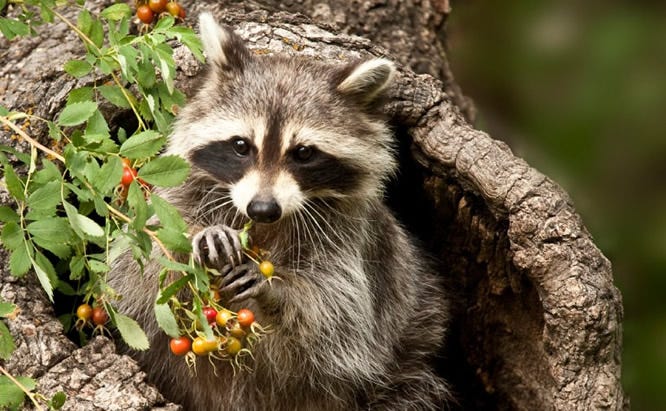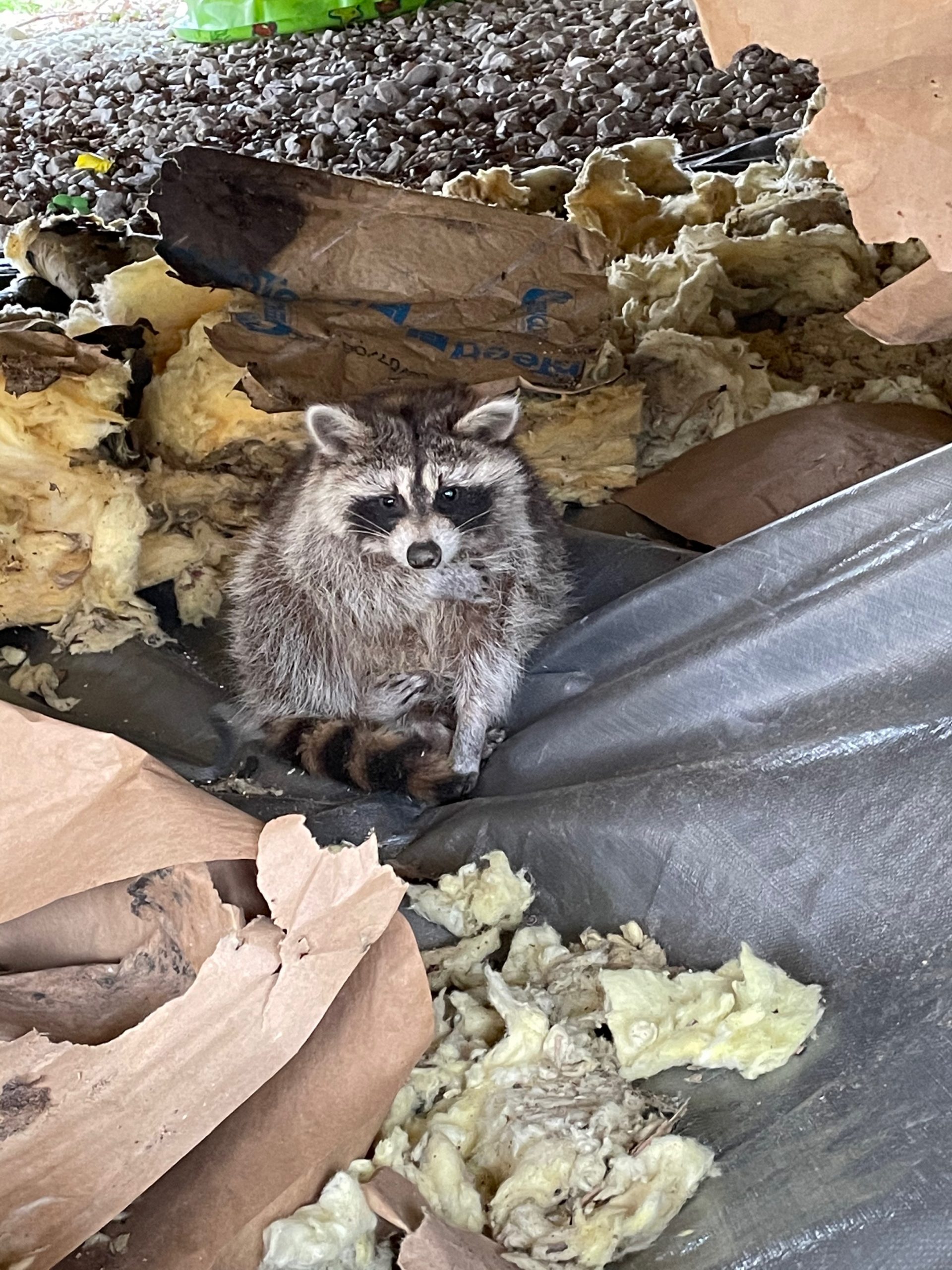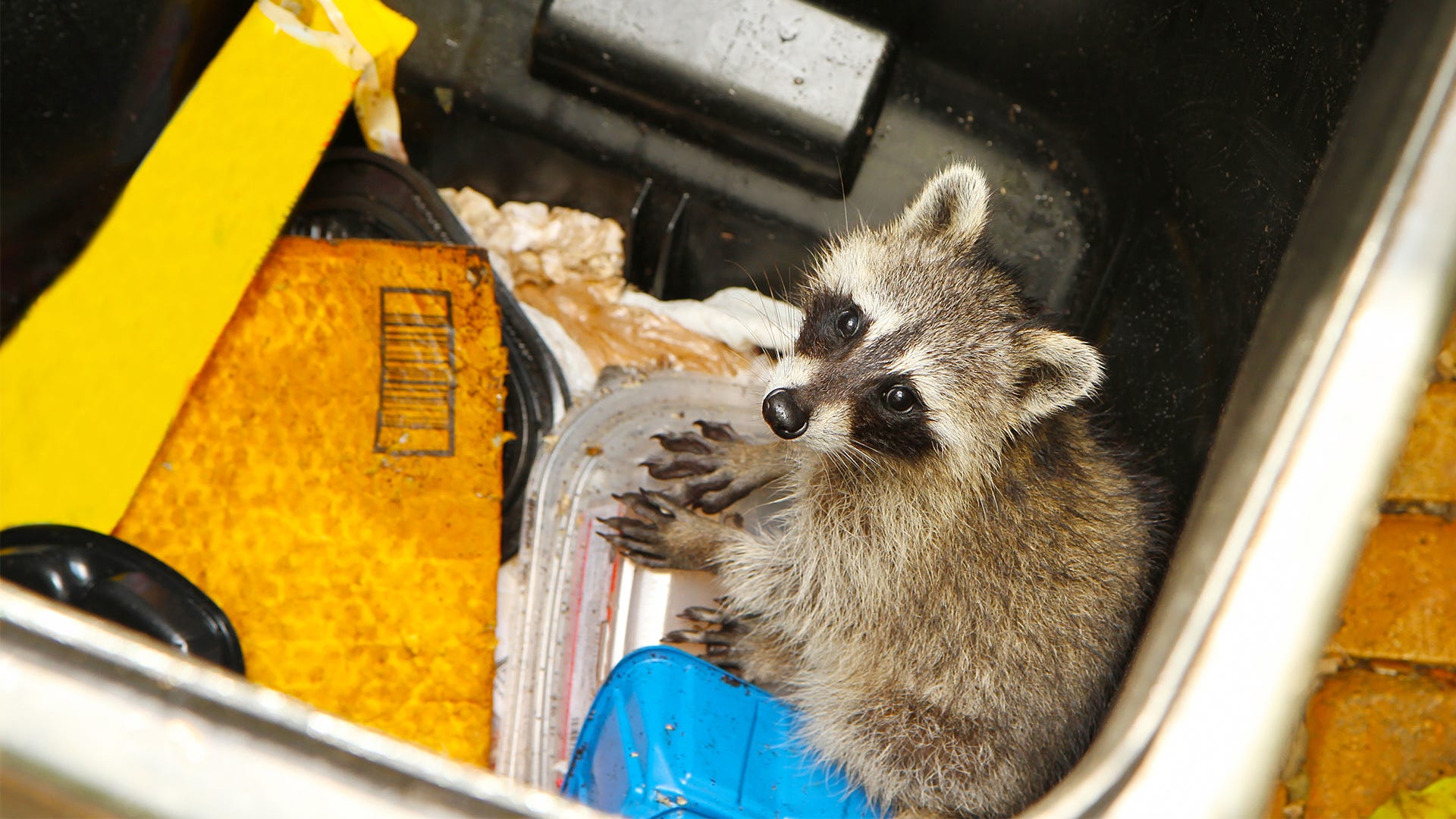Raccoons are fascinating creatures with distinct living habits. These small mammals thrive in diverse environments.
Raccoons are known for their adaptability and resourcefulness. They can live in forests, urban areas, and even near water bodies. This adaptability helps them survive in various settings, from rural woods to city parks. Curious about where these masked bandits make their homes?
Understanding their habitats can help us coexist with them better. Raccoons’ homes depend on food availability, shelter, and safety. They seek out places that provide these essentials. Whether it’s a hollow tree, an attic, or a burrow, raccoons are experts at finding cozy spots. Let’s explore the different places raccoons call home and learn more about their unique living patterns.

Credit: www.havahart.com
Overviews of Contents
ToggleUrban Environments
Raccoons are highly adaptable creatures that thrive in a variety of environments. One of the most interesting places they inhabit is urban areas. In cities, raccoons find plenty of food and shelter, making these locations ideal for their survival. Let’s explore some of the common urban environments where raccoons live.
City Parks
City parks are a favorite spot for raccoons. These areas offer numerous trees and bushes, providing perfect hiding spots. Raccoons are nocturnal, so they often come out at night to forage for food. They might rummage through trash cans or look for leftovers from picnics. The abundance of food and shelter makes city parks an excellent home for these clever animals.
Curious about Great Deals? We've got more info in this linked article. Why Do Raccoons Wash Their Food?: Unveiling the Curious Habit
Suburban Backyards
Raccoons also thrive in suburban backyards. They can find plenty of food in gardens and compost bins. Bird feeders attract raccoons as well, as they enjoy the seeds and nuts. Many suburban homes have sheds or garages where raccoons can find shelter. Suburban backyards provide all the resources raccoons need to survive.
Forest Habitats
Raccoons are versatile creatures, known for their adaptability to various environments. One of their preferred habitats is the forest. Forests provide raccoons with abundant food sources, shelter, and water. This section will delve into the specific types of forest habitats raccoons thrive in.
Deciduous Forests
Deciduous forests are rich in biodiversity. These forests shed their leaves annually, creating a thick layer of leaf litter. This litter is perfect for raccoons to forage for insects and small animals. Fallen logs and dense underbrush offer excellent hiding spots. Raccoons build their dens in tree cavities, under logs, or in abandoned burrows.
In deciduous forests, raccoons also have access to various fruits, nuts, and berries. This diversity in food sources makes these forests ideal for raccoons. They remain active throughout the year, even in winter, searching for food.
Mixed Woodlands
Mixed woodlands combine both deciduous and coniferous trees. This mix provides raccoons with a varied environment. The presence of evergreen trees offers year-round cover. During winter, this cover is crucial for raccoons’ survival.
In mixed woodlands, raccoons enjoy a broad diet. They eat everything from small mammals to bird eggs. Streams and ponds within these woodlands offer water and additional food sources like fish and amphibians. This variety ensures raccoons have a balanced diet.
The terrain in mixed woodlands also offers numerous denning sites. Raccoons can find shelter in rock crevices, dense shrubs, and hollow trees. These varied habitats ensure raccoons can thrive in mixed woodlands.
Explore more about Great Deals with this related post. How to Keep Raccoons Away: Effective Tips and Tricks
Wetland Areas
Raccoons are adaptable creatures. They thrive in various environments, including wetland areas. Wetlands provide food, water, and shelter, making them ideal habitats. Let’s explore some of these wetland areas.
Marshes
Marshes are wetlands dominated by herbaceous plants. These plants include grasses, reeds, and sedges. Raccoons find ample food in marshes. They hunt for fish, frogs, and insects. The dense vegetation offers excellent cover. This helps raccoons hide from predators.
| Food Sources | Vegetation |
|---|---|
| Fish, Frogs, Insects | Grasses, Reeds, Sedges |
Swamps
Swamps are another type of wetland. Unlike marshes, swamps have woody plants. Trees and shrubs dominate these areas. Raccoons use the trees for shelter and nesting. They also forage for food like crayfish and small mammals. Swamps offer a diverse habitat, rich in resources.
- Woody plants like trees and shrubs
- Food sources: Crayfish, Small mammals
Coastal Regions
Raccoons are highly adaptable animals. They thrive in various environments. One of their favorite habitats is coastal regions. These areas provide abundant food and shelter.
Beaches
Raccoons often explore beaches. They search for food like crabs and fish. Driftwood and debris offer hiding spots. They are excellent swimmers. This helps them catch prey and escape danger.
Estuaries
Estuaries are rich in nutrients. Raccoons find plenty of food here. They eat clams, mussels, and other shellfish. The mix of salt and fresh water attracts diverse prey. Dense vegetation provides cover from predators.
Looking for more insights on Great Deals? You may find this post valuable. How to Keep Raccoons Out of Your Yard: Proven Strategies
Mountain Regions
Raccoons are adaptable creatures. They thrive in various environments, including mountain regions. These masked mammals find mountain habitats particularly suitable due to the availability of food and shelter. In the mountains, raccoons can be found in different areas, each offering unique conditions and challenges.
Foothills
In the foothills, raccoons enjoy a moderate climate. This area provides plenty of food sources. They feast on fruits, nuts, and small animals. The dense vegetation offers excellent hiding spots. Foothills are perfect for raccoons to build their dens. They often use hollow trees or burrows left by other animals. These areas are rich in resources, making them ideal for raising young raccoons.
Alpine Zones
Alpine zones present a harsher environment. These areas are higher up the mountains. The climate is colder and vegetation is sparse. Despite these challenges, raccoons can still be found here. They adapt by finding shelter in rock crevices or dense shrubs. Food sources are scarcer, but raccoons are resourceful. They hunt small mammals and insects. The alpine zone’s harsh conditions mean fewer predators, offering some safety for these clever creatures.

Credit: www.trutechinc.com
Agricultural Lands
Raccoons are highly adaptable animals. They thrive in various environments, including agricultural lands. These areas offer an abundance of food and shelter, making them ideal habitats for raccoons. Let’s explore how raccoons live in these agricultural settings, focusing on farms and orchards.
Need to understand more about Great Deals? This post might help you. Are Raccoons Nocturnal Animals? Unveiling Their Nightlife Secrets
Farms
Farms provide raccoons with plenty of food sources. They often find shelter in barns, sheds, and other structures. Raccoons are nocturnal, so they forage at night. They eat crops, insects, and small animals found on farms.
- Raccoons raid cornfields for fresh corn.
- They dig up root vegetables like carrots and potatoes.
- They consume grains stored in silos and barns.
Farmers may find raccoons a nuisance due to crop damage. Yet, raccoons play a role in controlling insect and rodent populations on farms.
Orchards
Orchards are another preferred habitat for raccoons. Fruit trees provide a rich food source. Raccoons climb trees to access fruits like apples, peaches, and cherries.
| Fruit | Raccoon’s Activity |
|---|---|
| Apples | Climb trees to eat ripe apples |
| Peaches | Gather fallen peaches from the ground |
| Cherries | Pick cherries directly from branches |
Raccoons also look for insects and small animals in orchards. These areas offer ample opportunities for raccoons to forage and find shelter.
Desert Edges
Raccoons are versatile creatures, adapting to various environments. One surprising habitat is the desert edges. These areas are where the dry desert meets other landscapes. Raccoons find unique ways to survive here.
Arid Zones
In the arid zones of the desert edges, raccoons face extreme conditions. The lack of water is a major challenge. They rely on their ability to find hidden water sources. Small pools or streams provide the necessary hydration.
Food is also scarce in arid zones. Raccoons eat insects, small animals, and plants. They are opportunistic feeders. They adapt their diet based on availability. This helps them survive in these tough conditions.
During the day, raccoons rest in cool, shaded areas. At night, they become active. They use their keen senses to hunt and forage. This nocturnal behavior helps them avoid the intense desert heat.
Oasis Areas
Oasis areas within desert edges offer more resources. These spots have water and vegetation. Raccoons thrive in these microhabitats. They find more food and shelter here.
Oasis areas provide a variety of plants and small animals. Raccoons enjoy the abundance of resources. They also find water more easily. This makes oasis areas ideal spots for raccoons in the desert.
Raccoons use their intelligence to locate oasis areas. They remember where to find water and food. This skill ensures their survival in desert edges.
In summary, desert edges are challenging habitats for raccoons. Yet, they adapt and thrive. They use their intelligence and adaptability to survive in arid zones and oasis areas.
Human Structures
Raccoons are highly adaptable creatures. They often find refuge in human structures. These animals can turn parts of your home into their own living spaces. This includes areas like attics and basements.
Attics
Attics are a favorite spot for raccoons. They offer warmth and safety. The high location keeps them away from predators. Attics have plenty of nooks and crannies for nesting. Raccoons can enter through small openings. They may damage your roof to get inside. Listen for scratching or thumping sounds. These noises might indicate raccoons in your attic.
Basements
Basements are another common hideout. They provide a cool, dark environment. Basements often have easy access points. Unsealed windows or vents are common entry ways. Raccoons might also find food sources here. They can disturb stored items and create a mess. Watch for signs like droppings or torn insulation. These can indicate raccoon activity in your basement.

Credit: www.havahart.com
Frequently Asked Questions
Where Do Raccoons Commonly Live?
Raccoons commonly live in forests, urban areas, and near water sources. They adapt easily to various environments. They often seek shelter in tree hollows, burrows, and attics.
Do Raccoons Live In Cities?
Yes, raccoons live in cities. They are highly adaptable and often find food in garbage bins. Urban areas provide raccoons with ample food and shelter opportunities.
How Do Raccoons Choose Their Habitat?
Raccoons choose habitats based on food availability, water sources, and shelter. They prefer areas with abundant resources and safe hiding spots. They are highly adaptable and can thrive in various environments.
Do Raccoons Live Near Water?
Yes, raccoons often live near water sources. They prefer areas with streams, rivers, or lakes. Water sources provide them with food and hydration.
Conclusion
Raccoons are adaptable creatures. They thrive in diverse environments. From forests to urban areas, these animals find a home. Understanding their habitats helps us coexist peacefully. Respect their space to avoid conflicts. Enjoy observing raccoons from a distance. Their behaviors and adaptability are fascinating.
Always remember, raccoons are wild animals. Keeping your surroundings clean deters them. They seek easy food sources. Encourage natural balance by respecting wildlife habitats. Let’s live in harmony with nature.




